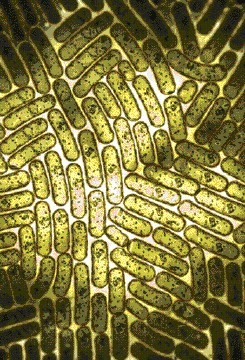
Microbes that convert electricity into methane gas could become an important source of renewable energy, according to scientists from Stanford and Pennsylvania State universities.
Researchers at both campuses are raising colonies of microorganisms, called methanogens, which have the remarkable ability to turn electrical energy into pure methane – the key ingredient in natural gas.
The goal is to create large microbial factories that will transform clean electricity from solar, wind or nuclear power into renewable methane fuel and other valuable chemical compounds for industry.
“Most of today’s methane is derived from natural gas, a fossil fuel,” said Alfred Spormann, a professor of chemical engineering and of civil and environmental engineering at Stanford.
“And many important organic molecules used in industry are made from petroleum. Our microbial approach would eliminate the need for using these fossil resources.”
While methane itself is a formidable greenhouse gas, 20 times more potent than CO2, the microbial methane would be safely captured and stored, thus minimising leakage into the atmosphere, Spormann said.
“The whole microbial process is carbon neutral,” he explained. All of the CO2 released during combustion is derived from the atmosphere, and all of the electrical energy comes from renewables or nuclear power, which are also CO2-free.”
According to Spormann, methane-producing microbes could help solve one of the biggest challenges for large-scale renewable energy: What to do with surplus electricity generated by photovoltaic power stations and wind farms?
“Right now there is no good way to store electricity,” Spormann said. “However, we know that some methanogens can produce methane directly from an electrical current. In other words, they metabolise electrical energy into chemical energy in the form of methane, which can be stored. Understanding how this metabolic process works is the focus of our research. If we can engineer methanogens to produce methane at scale, it will be a game changer.”
Burning natural gas accelerates global warming by releasing carbon dioxide that’s been trapped underground for millennia.
The Stanford and Penn State team is taking a “greener” approach to methane production. Instead of drilling rigs and pumps, the scientists envision large bioreactors filled with methanogens – single-cell organisms that resemble bacteria but belong to a genetically distinct group of microbes called archaea.
By human standards, a methanogen’s lifestyle is extreme. It cannot grow in the presence of oxygen. Instead, it regularly dines on atmospheric carbon dioxide and electrons borrowed from hydrogen gas. The byproduct of this microbial meal is pure methane, which methanogens excrete into the atmosphere.
The researchers plan to use this methane to fuel airplanes, ships and vehicles. In the ideal scenario, cultures of methanogens would be fed a constant supply of electrons generated from emissions-free power sources, such as solar cells, wind turbines and nuclear reactors.
The microbes would use these clean electrons to metabolise carbon dioxide into methane, which can then be stockpiled and distributed via existing natural gas facilities and pipelines when needed.
When the microbial methane is burned as fuel, carbon dioxide would be recycled back into the atmosphere where it originated from – unlike conventional natural gas combustion, which contributes to global warming.
Recommended for you
